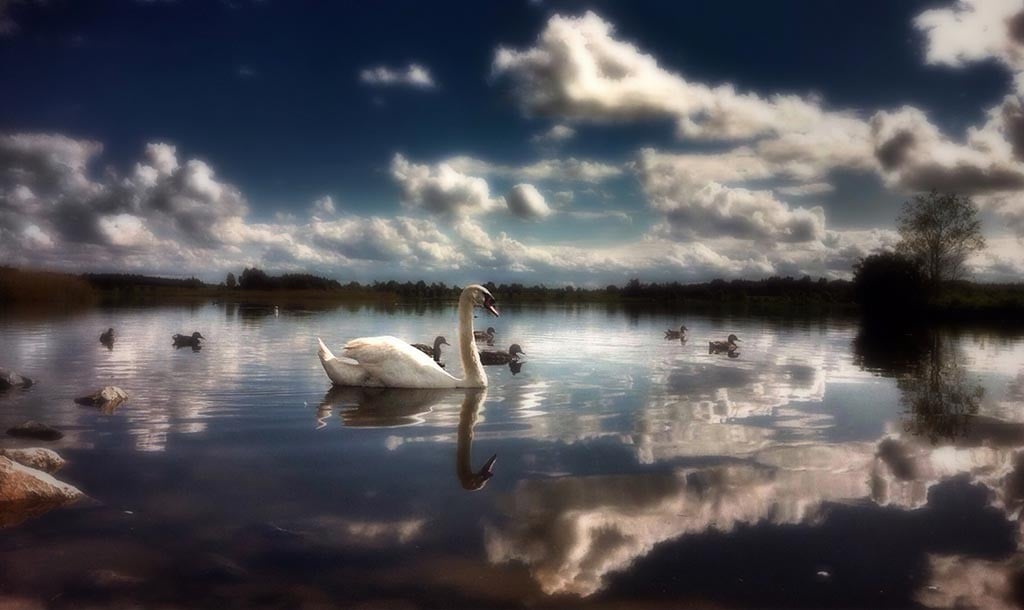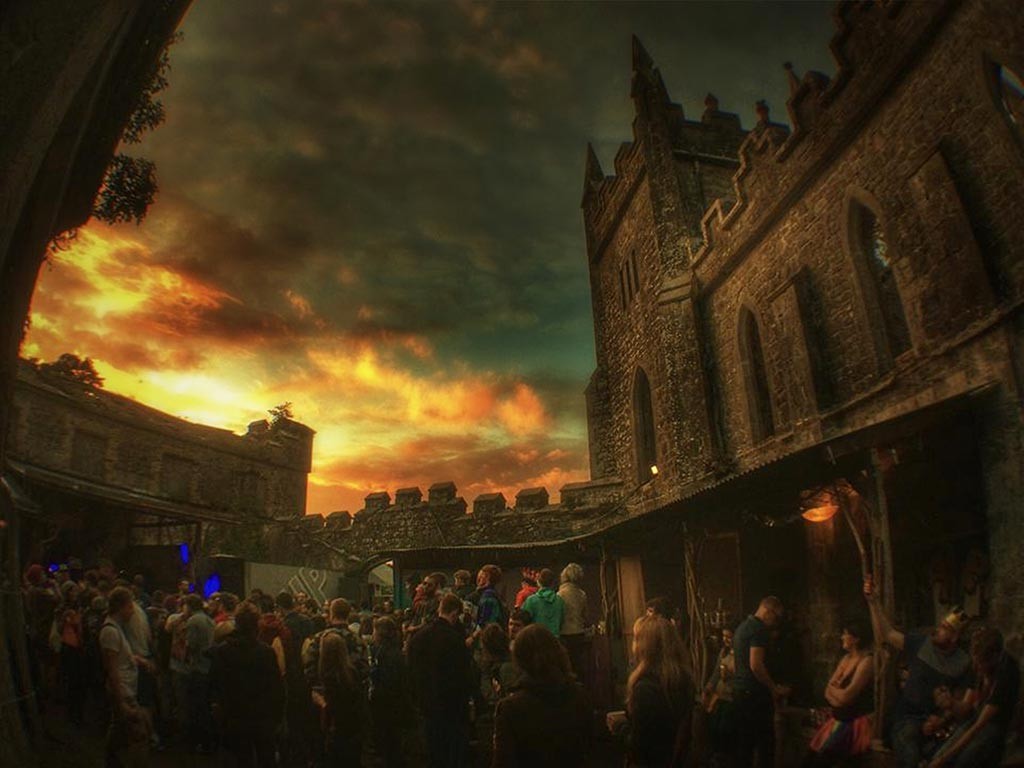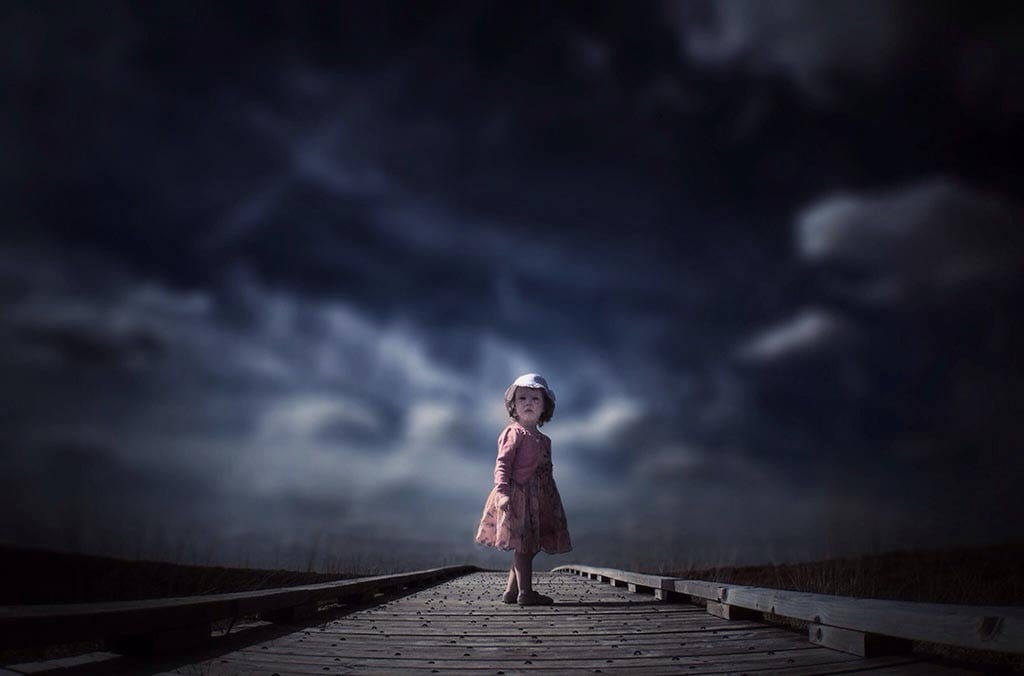Paul Moore is a talented iPhone photographer whose work has been featured in exhibitions all over the world including Miami, Orange County, San Francisco, New York, Maryland, Paris, London, New Zealand and his home town of Tullamore, Ireland. This is a world away from his day job as an accountant and financial advisor, which by his own admission, is probably why he loves photography so much as it is so different from his daily routine.
Paul has been interviewed and featured on prestigious websites such as Eyeem, iPhoneogenic, iPhoneography.com, PhotographyBlogger.net, Art of Mob, The AppWhisperer, The Journal.ie (an Irish news website) and the iPhone Photography School, where he currently writes a fortnightly column. As if this wasn’t enough he has been featured in Shooter Magazine, the Washington Post and P1xels and has had a number of honourable mentions in the Mobile Photography Awards.
Looking at Paul’s work it isn’t hard to see why he has attracted so much interest. The photographs he takes have a surreal, moody quality to them, this maybe something to do with the dramatic sky’s or misty landscapes he shoots or the way he captures the light in his sunrises and sunsets. Either way Paul has certainly mastered the clever use of light to convey a unique mood within his photographs.
I wanted to find out more about his work, his approach and what inspires him to take these stunning photographs with his iPhone so took the opportunity to speak to him about his work.
How were you first introduced to iphone photography?
I got my first iPhone about 5 years ago. It was the 3GS. It only had a 3.2MP camera so at first I didn’t even bother using it as I presumed that any photos I took would be very poor quality. But as time went on I found I was actually using it more and more. I suppose it’s down to the old adage that the best camera is the one you have with you.
I initially only used it for capturing family snaps. I was always on the lookout for new apps for the phone and I came across a photo editing app called Photogene. It was a basic photo editor with a few filters as far as I remember but once I realised I could edit photos on the phone I was hooked.
I had always been looking for a creative outlet. I toyed with the idea of being a musician but a lack of any real musical ability quickly put an end to that. I never would have thought that a mobile phone and a basic app would be that outlet. From very simple beginnings I have spent the last 5 years learning, experimenting and hopefully improving. I still have a long way to go but I think if I get to a point where I am not challenging myself and learning new skills and techniques the fun will have gone out of it. As it is I am very much enjoying what I am doing.
How would you describe your style and approach to the photos you take?
I like to take everyday scenes and familiar locations and add a touch of the surreal or hyper real to them. I like to add a sense of drama and mystery to my images and hope that each image tells a story. No matter how mundane it might be. Recently I started taking photos with a DLSR and with those I try to leave them pretty much as they came out of the camera. But with the iPhone I like to ramp things up a bit. I use a lot of HDR effects (particularly the ones in Snapseed). I also use filters and textures to try and enhance the drama my photos. I suppose the concept behind my photos is to try to get people to see locations that they are familiar with in a new light.
I take all of my iPhone pics with the native camera app. I shoot first and concentrate on the editing later. When I shoot photos all I am really thinking about is composition and lighting and getting as many shots as from as many different angles as I can. I rarely think about the editing at that stage. My main concern is to get images that would work in their own right. No amount of editing will turn a bad photo into a good one. I have tried in the past and I still do but it just doesn’t work. After a day’s shooting I will review the shots and pick out the better shots for editing.
What apps do you use and is there a process or methodology that you apply to your post production editing?
When I started off I would download practically every editing app that was released but I quickly realise that the majority were either ‘one trick ponies’or just downright useless. Now I try to stick to a few select apps that I am comfortable with. At the moment these are PhotoToaster, Snapseed, HandyPhoto, Tadaa and Distressed FX. There are also a few apps that I use occasionally such as LensLight for adding light effects, AlienSky for adding out of this world special FX, Juxtaposer for adding elements from other photos and Mextures for textures and filters.
Depending on the look I am going the first step in the editing process is to either use PhotoToaster to alter the lighting using the lighting FX brushes or if I want more drama I open Snapseed and use one of the HDR Filters. There are 4 excellent preset HDR filters in Snapseed that are fully customisable. Next I straighten and crop the photo in whatever app I happen to be in to try and improve the overall composition. Both apps have very flexible cropping and straightening tools. The next step is usually to open the photo in HandyPhoto and use the Retouch Tool to remove any distractions.
If I am going to add any elements using LensLight, AlienSky or Juxtaposer I will usually do so at this stage so that any subsequent editing will help blend this new element into the image a bit better. Any filters or textures added after this will affect the whole image including any added elements giving a uniform look or texture to the entire image.
Finally I will bring the image back into PhotoToaster or Snapseed to fine tune the lighting and overall tone of the photo. And that’s it really. It’s a process that usually takes about 15 minutes. If I go over that time then it means that the edit isn’t working and anything I do after that is just making it worse.
What is it about the Irish landscape that inspires you?
There is a beauty and mysticism to the Irish countryside that has inspired artists and writers for centuries. The country is steeped in history with old buildings and other sites dotted around the country side. There are areas of stunning scenic beauty and ancient forests and woodlands that all have a story to tell. We are also very lucky here in Ireland that we (normally) have 4 distinct seasons where the landscape will change dramatically with the passing of each season. Although, sometimes, the only way to tell what season it is, is that the rain is warmer in summer than in winter. The seasonal changes can result in very different photos of any particular location.
My main aim with my photography is to try and capture this beauty and show off my surroundings by sharing my photos with a wider audience through social media.
Are there any photographers that have been a big influence on your work?
In the modern age of social media and photo sharing websites there is no shortage of sites you can go to for inspiration and ideas. There are many amazing mobile photographers producing wonderful work all around the world. A great place to start is the Mobile Photography Awards site. It will give a great idea of what people are producing with mobile phones. There are a great many mobile photographers that I admire and whose work inspires me to continue to strive to improve. These would include Roger Clay, Sarah Jarrett, Nazaret Sanchez, Mariko Klugg and Gianluca Ricoveri to name but a few. There are so many more but the four I have mentioned have very distinct styles. You know straight away that it’s them when you see one of their photos.
When it comes to my own influences I have always had two quotes at the back of my mind when taking photos. One is from Ansel Adams, the american landscape photographer, and it is ‘Twelve significant photographs in any one year is a good crop’. The 2nd is from the french photographer Henri Cartier-Bresson and he said ‘Your first 10,000 photos will be you worst’. Although he did say this back in the old film days. In the digital medium that can probably increased to 50,000 and possibly even 100,000. Depending on how much you shoot. The reason I keep these two quotes in mind is that I have to remember that not every photo is going to be a masterpiece. In fact if I get one good photo per month that is pretty good going. This helps to keep everything in perspective. I have probably taken around 50,000 photos since I started so it means I probably have another 50,000 practice shots to go. Unfortunately, though, that doesn’t mean that every shot I take after that will be a keeper.
Do you have any incredible encounters or a story that really is part of your photographic journey that you would like to tell us?
When I started taking photos with my phone 5 years ago I had no idea where it would lead to. I thought that the best I could hope for was a few favourable comments on the various social media sites where I posted my photos. But since then I have had my photos included in exhibitions and publications all over the world and I have gotten to know so many amazing photographers (some of whom I have met in person) through iPhone Photography forums and social media groupings. The whole iPhone Photography scene is a prime example of social media at it’s best with people sharing their images, ideas, news, knowledge etc freely with other photographers.
The culmination of all this for me was a couple of weeks ago when my wife and I attended the opening of an exhibition in Paris where one of my photos was on display. We met a number of photographers at this show that I had only known through social media. That has been the highlight so far.
You write insightful articles for the iPhone Photography School website, what would be your top tips or words of wisdom for aspiring mobile photographers?
I know it may sound odd coming from someone who heavily edits their photos but my main advice to any aspiring mobile photographers would be to stay away from apps as much as possible and just concentrate on taking photos. As I said earlier no amount of editing will turn a bad photo into a good one. I wish I had spent more time in the first few years concentrating solely on taking photos with minimal editing.
For anyone starting out they should just keep taking photos. The beauty of the digital medium is that you can just keep taking photos and delete the bad ones. And there will be lots of bad ones. Photograph anything that catches your eye. You will always have your phone with you so that won’t be a problem. Over time you will start to figure out what works and what doesn’t. Also you will start to develop an interest in particular subjects and styles of photography and then you can concentrate on that.
One final specific piece of advice I will add here is to stand back from your subject. It is far easier to crop a photo than to try and replace someone’s head in a shot.
Of course one of the great things about mobile photography is that you can edit photos on your phone. Once you are happy that you are getting good well lit, nicely composed shots you can then start looking at different editing apps. Try to pick a few and learn how to use them well. Always try to get apps that save your edited photo in full resolution. All the apps mentioned above apart from Tadaa save in full resolution. Experiment with different looks and styles. No one ever has to see these experiments so go mad and push the boat out.
Tell us about a few of your favourite photos and the story behind them?
I have a few favourite shots that I go back to again and again. A lot of time I will look at older images and see things that I wish I had done differently and sometimes I even go back and reedit these shots. These images are ones I am quite happy with and have never seen the need to change.
This first on is of my son in the middle of a wood with a carpet of bluebells. He got distracted by one of my other children just as I took the shot. The fact that he is looking at something unknown outside the frame adds an air of mystery to the shot. I think it captures the mysticism of the Irish woodlands that I was talking about earlier. Like a lot of my better shots there is a lot of luck involved. If my son had remained looking at the camera it wouldn’t be as powerful. I have to say that the more shots I take the luckier I get.
This second image is as also another lucky shot. I was taking photos of my daughter walking along a local boardwalk. She just happened to turn to see if I was still there when I took the shot. The big expanse of ominous sky and the slightly concerned look on her face really add to the mood of the pic. I think it would make a good movie poster.
The next image was taken in a place called Howth just north of Dublin. It is a small fishing port based around an old harbour. I love the lighthouse there and as luck (there’s the luck thing again) would have it a fleet of sailing boats just happened to be returning to the harbour when I turned up to take a few shots. I just like the light and the overall mood in this shot. It really shows off the beauty of the old Irish architecture.
Next is a photo I took at a local lake called Lake Finnamore. I like how the setting sun and the island are reflected off the perfectly calm lake showcasing the amazing Irish scenery. I have a large framed print of this hanging in my home.
This one is of my wife looking out over Galway Bay from a place called Coral Beach. My favourite subjects are my family. And if I can capture them enjoying the stunning Irish scenery that’s a bonus.
And lastly this is a pic of my oldest son exploring the grounds of an old derelict mansion just outside my home town. The funny thing with this shot is that my son wasn’t there. The grounds of the house aren’t easily accessible and it was a very foggy day so it wouldn’t have been safe to try and bring him in. I added him in using the Juxtaposer app. It helps to create a sense of scale and adds an element of storytelling to the shot. Again I just like the air of mystery and eeriness of this image. And I was quite happy with the edit.





















I absolutely adore your work Paul. This article is just fantastic!
Hi Elaine. Thanks very much. Glad you liked it 🙂
Fantastic imagery and wonderful to see such emphasis on the basic fundamentals of photography. Mr. Moore eloquently illustrates his process, which though seemingly simple, he adeptly has mastered with an artist’s flair. I do something similar with my iPhone shots and apps at http://rsmithings.com – I call it handcrafted surrealism, and identify with what’s here, because we’re literally using our hands on screens to craft this type of art. Thanks for this highly enjoyable feature!
Superb interview and thanks for your kind quote Paul!!
Always enjoy reading interviews with Paul and viewing his magical Irish landscapes.